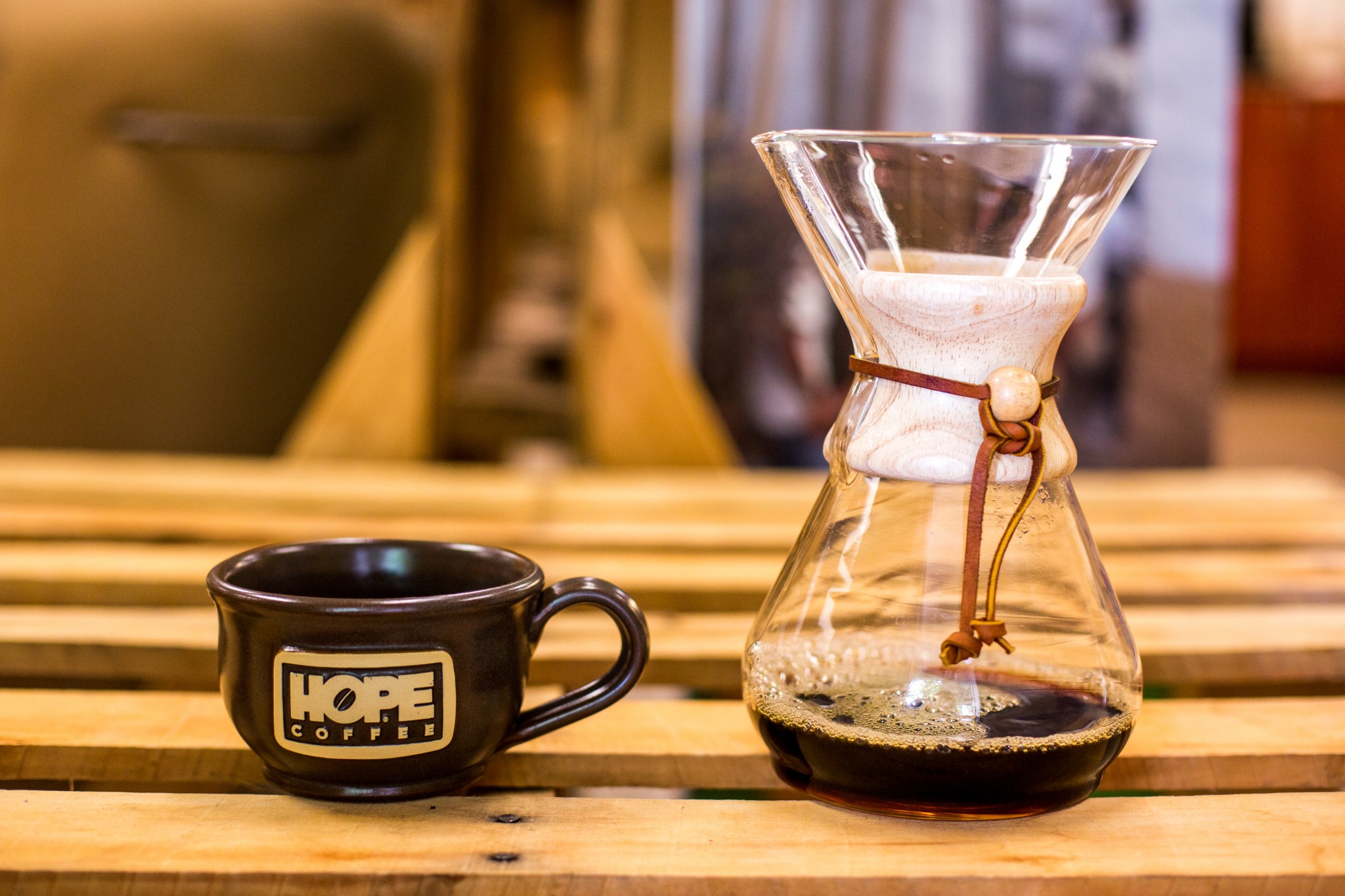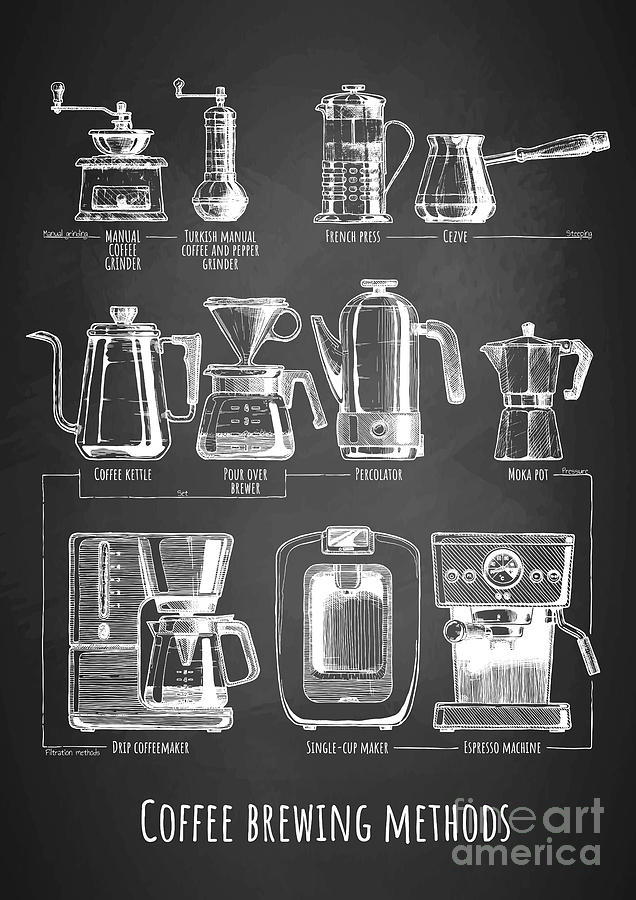Ingenious Coffee Brewing Methods to Boost Your Morning Activity
Ingenious Coffee Brewing Methods to Boost Your Morning Activity
Blog Article
The Scientific Research Behind Coffee Developing: Just How Temperature Level and Time Affect Your Beverage
Recognizing the scientific research behind coffee brewing reveals that temperature and time are not simple variables however critical aspects that dictate the drink's flavor account and total quality. As we discover the nuances of these aspects, the question emerges: exactly how can one effectively equilibrium temperature and time to accomplish that perfect mixture?
The Chemistry of Coffee Extraction
The chemistry of coffee extraction looks into the complex procedures that change raw coffee beans into the fragrant beverage enjoyed worldwide. This transformation largely includes the solubility of different substances existing in the beans, which are affected by factors such as work dimension, water quality, and the brewing approach employed.
Throughout the developing procedure, warm water acts as a solvent, extracting soluble substances, consisting of high levels of caffeine, lipids, sugars, and acids, from the coffee premises. Each compound adds to the taste account, scent, and body of the last beverage. As an example, acids are in charge of tangy and intense notes, while oils add to an abundant mouthfeel.
The initial stages of brewing extract acids and sugars, leading to a pleasant level of acidity, while extended removal can lead to resentment due to over-extraction of unwanted compounds. Comprehending these chemical interactions is critical for maximizing developing techniques, as the equilibrium between removal time and water temperature can dramatically influence the total top quality of the coffee.
Suitable Brewing Temperatures
Finding the ideal developing temperature level is essential for unlocking the full possibility of coffee flavors and aromas - coffee brewing methods. Study indicates that the ideal variety for brewing coffee exists between 195 ° F to 205 ° F(90 ° C to 96 ° C) Within this variety, the removal procedure successfully liquifies the desirable soluble compounds in coffee beans, leading to a balanced and savory mug
Developing at lower temperature levels, such as listed below 195 ° F(90 ° C ), might cause under-extraction, yielding a weak and acidic mixture with soft tastes. On the other hand, developing at temperatures going beyond 205 ° F(96 ° C) can lead to over-extraction, creating a rough and bitter taste as a result of the excessive dissolution of unfavorable substances, such as tannins.
In addition, the excellent developing temperature can vary depending on the coffee bean kind and roast level. For instance, lighter roasts often benefit from slightly greater temperature levels to boost their intricate flavor accounts, while darker roasts might be better matched to reduced temperatures to alleviate anger.
Eventually, maintaining precision in developing temperature levels is crucial for attaining an unified equilibrium of flavors, making sure that every mug of coffee supplies a satisfying sensory experience.
Effect of Brewing Time
Developing time plays a pivotal role in determining the flavor account and general top quality of coffee. The removal procedure, which influences the taste, scent, and body of the beverage, is largely based on for how long the coffee premises are in call with water. Much shorter brewing times can lead to under-extraction, bring about a sour or weak flavor, as not nearly enough soluble compounds are dissolved. On the other hand, prolonged developing can cause over-extraction, where unfavorable compounds are launched, causing an astringent or bitter taste.
Ideal developing time differs depending on the approach utilized and the work size of the coffee. A French press normally requires about 4 minutes, while coffee extraction is generally completed within 25 to 30 seconds. It is necessary to adjust developing time in combination with various other variables, such as water temperature level and coffee-to-water ratio, to achieve the wanted flavor account.
Comprehending the impact of developing time enables coffee lovers to fine-tune their developing methods, inevitably improving the sensory experience of their mug (coffee brewing methods). With cautious focus to this variable, one can unlock the complete potential of the coffee, exposing its unique qualities and nuances
Developing Methods and Their Effects

As an example, techniques like French press and cold brew permit for a longer steeping time, resulting in a fuller body and robust taste due to enhanced extraction of oils and soluble solids. On the other hand, espresso brewing uses high stress and a much shorter removal time, generating a focused shot that emphasizes extreme tastes and a rich crema.
Pour-over techniques, such as Chemex or V60, offer a more regulated extraction process, enabling the brewer to manipulate flow price and water circulation, which can improve brightness and clarity. Percolation techniques cycle water via the coffee premises numerous times, leading to a more powerful, frequently bitter flavor.
Finally, using paper filters versus steel filters can likewise affect the final preference; paper filters typically produce a cleaner mug by trapping oils and great fragments, while metal filters allow even more oils to travel through, adding to a fuller mouthfeel - coffee brewing methods. Comprehending these subtleties can boost the find out here coffee experience significantly
Tips for Perfecting Your Mixture
A well-executed mixture can transform also the most basic coffee right into an amazing read more experience. Grind the beans simply prior to brewing to make the most of freshness, guaranteeing the work size matches your developing technique-- coarser for French press and finer for espresso.
Water high quality plays an important role; use filtered water free from contaminations. The excellent developing temperature varies in between 195 ° F and 205 ° F(90 ° C to 96 ° C ) As well hot can swelter the coffee, while also amazing might under-extract flavors.
Timing is just as essential. For immersion approaches, soaking for 3 to five mins is ideal, whereas drip approaches commonly take around five minutes. Explore mixture times to locate your preferred strength.

Conclusion
In summary, the complex partnership in between temperature level and time is paramount in the coffee developing process. Complying with ideal developing temperatures navigate to this website between 195 ° F and 205 ° F, alongside specific timing customized per technique, guarantees the preferred flavor profile is accomplished. Comprehending these clinical principles encourages people to improve their brewing methods, eventually resulting in a much more enjoyable and balanced coffee experience. Proficiency of these aspects is necessary for any coffee lover seeking excellence in their beverage.
Understanding the science behind coffee developing exposes that temperature level and time are not plain variables but crucial aspects that determine the beverage's taste profile and general high quality. Understanding these chemical interactions is vital for enhancing brewing techniques, as the balance in between extraction time and water temperature can substantially influence the general top quality of the coffee.Brewing time plays an essential role in determining the flavor account and total high quality of coffee. By concentrating on these elements-- bean high quality, grind size, water temperature, soaking time, and ratio-- you can raise your coffee developing process, resulting in a continually superior cup.
In recap, the intricate partnership in between temperature and time is vital in the coffee developing process.
Report this page